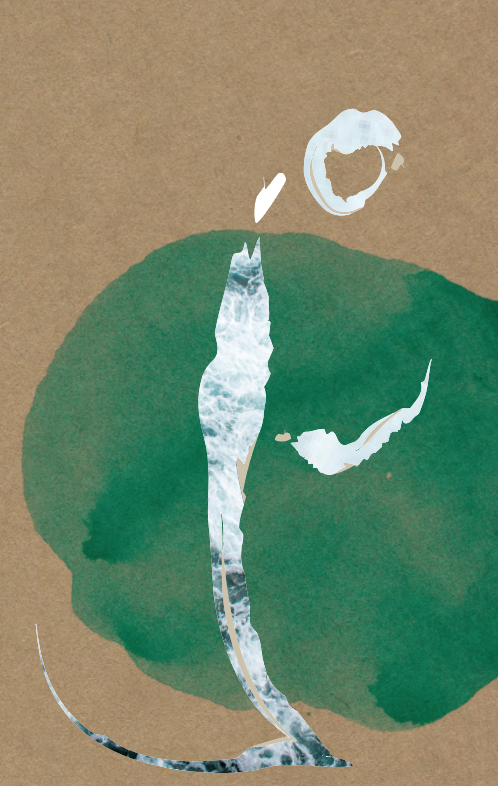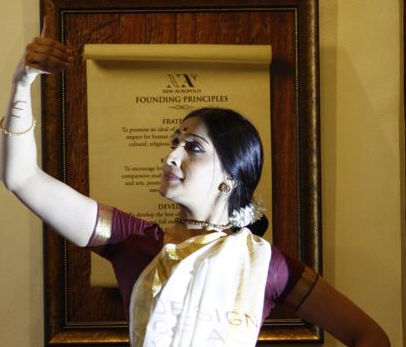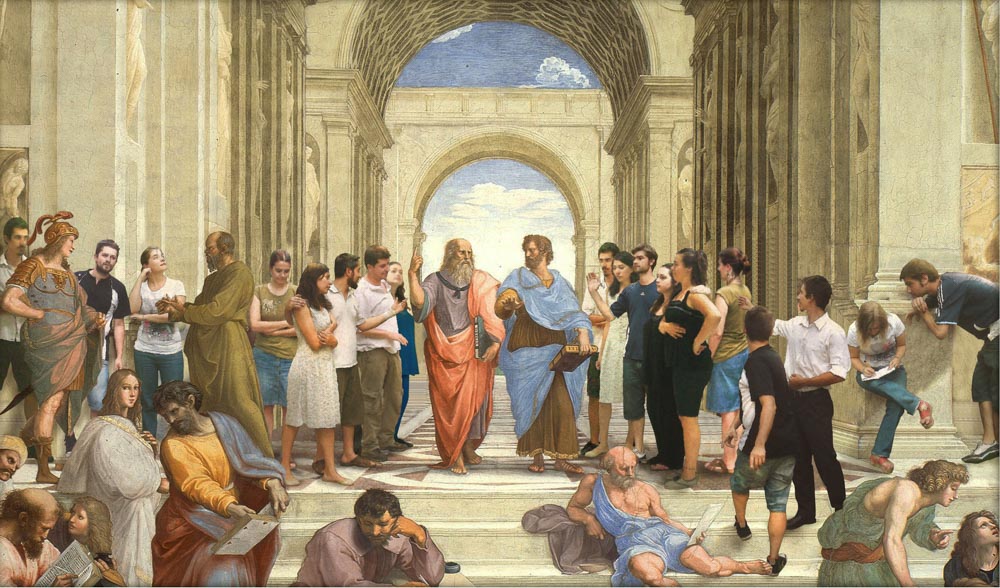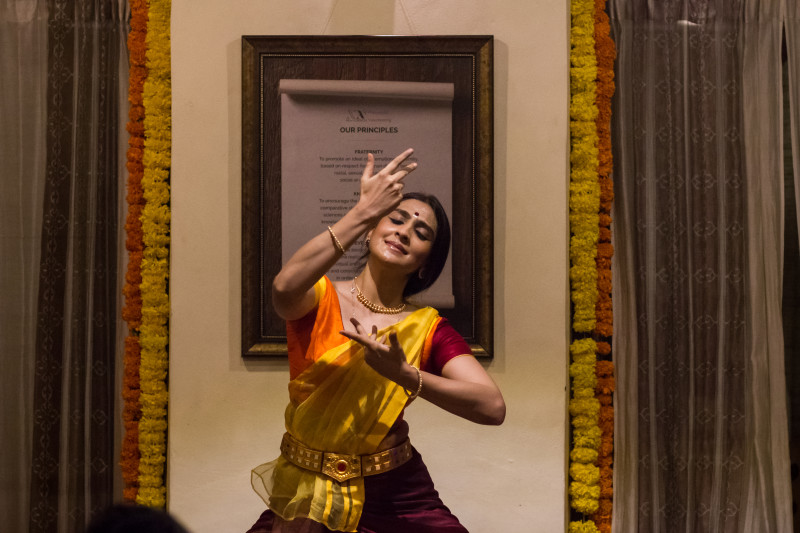Qawwali: Call of the Spirit
Article By Harianto Mehta
 This article serves only as an introduction to the legendary origins, metaphysical purpose, and the traditional form used in the practice of Qawwali. It would be impossible to capture the cultural nuances, complex history, and social impact of the genre in this brief work, but I hope to share some principal themes that have emerged from my own amateur investigation, to help the reader embark on their own exploration of this magnificent Sufi practice.
This article serves only as an introduction to the legendary origins, metaphysical purpose, and the traditional form used in the practice of Qawwali. It would be impossible to capture the cultural nuances, complex history, and social impact of the genre in this brief work, but I hope to share some principal themes that have emerged from my own amateur investigation, to help the reader embark on their own exploration of this magnificent Sufi practice.
Bridge to The Divine
The metaphysical and creative property of sound has been widely recognized across cultures worldwide, since time immemorial. The Indian tradition refers to this creative power as Kriyashakti. And a similar idea is found in the use of the pop culture word abracadabra, which is said to originate from ancient Hebrew, and loosely translates to, “I create, as I say.” But perhaps the most well-known scriptural reference emerges from the Book of Genesis revered by every biblical tradition; In order to initiate the magical process of cosmic creation, “God said, ‘Let there be Light’; and there was Light.” Here, the Word, the vocalized declaration of Divine Will, acts as the bridge between the eternal and divine realm of the Archetypes, and the created transient world of form. It follows, therefore, that many traditions such as the Bhakti movement in India, and Gospel in the West, have relied on sound, whether in the form of music or chant, as part of the religious practice, to elevate consciousness, in order to reconnect from the world of form, to the divine.
| Aan Roz Ke Rooh-e Aadam,
Aamad Bah Badan, Guftand Dar Tan Dar Aa, Niyaamad Dar Tan, Khoobaan-e Qudsiyaan, Bah Lahn-e Daawood, Guftand Dar Tan Dar Aa Dar Aamad Dar Tan
|
On the Day of the Covenant, when Adam’s soul,
Entered his earthly body, It was ordered, ‘Enter the body!’ But Adam’s soul refused to enter the body, Beautiful celestial beings, In the divine melody of David, Then sang, ‘Enter the body’, And moved by this celestial song, Adam’s soul entered his body. |
This verse used in Qawwali was composed by Hazrat Amir Khusrau, and captures the suffering of Adam’s soul; the suffering of separating from his true home, and immersing himself into the limitation of a physical body. He resisted, until being lured into the manifest world, moved by angelic music. Some may recognize in this the need to push beyond the boundaries of our comforts, in order to gather experience and evolve. Just as music caused the spirit to descend, the Qawwal uses music to ascend, back to this eternal home.
Among these traditions is the rich culture of Qawwali, generally associated with a mystical form of Islam called Sufism, as practiced by sects in the Indian sub-continent since at least the 14th century. Sufis believe in the ability to encounter and experience Divinity by engaging with Life, through a process of education, or formation. It demands purification (saaf in Arabic, and hence the name Sufi) meant to lead to the dissolution of the ego and transparency of the personality, in order to perceive Truth, or God.
Ishq: A Force of Union
What exactly is Qawwali? Is it a musical style? Is it a literary tradition? Is it a part of the religious practice? Or is it a philosophical path? It seems that the underlying premise of Qawwali is that it is a celebration of Ishq – usually, but insufficiently, translated as Love. It is not pyar, nor even mohobbat – other words for love that indicate a deep attachment, or desire to be together with the object of one’s affection. In contract, Ishq inspires the lover to totally annihilate oneself, to merge into, and become one with. (2) It surpasses affection, and is not just a passing emotion. It is described as an elevated state of consciousness, of being, of a shared sense of belonging. In literature, it is often described as a trance, or a state of intoxication, in which the ego dissolves, and the lover is lost, disidentified with the external and transient world of illusory forms. The poetry used is often deliberately left ambiguous; a man might dedicate the words to his beloved lady, a father might dedicate the same words to his beloved daughter, a devout follower might dedicate the words to a prophet, while the seeker will sing to unite with God, with Life, with Truth.
| Apni chhab banaike,
mein to pee ke paas gayi Aur jab chhab dekhi piyu ki, mein toh apni bhool gayi |
Myself I adorned
To visit my Beloved. But when my eyes glimpsed Him, Myself I forgot. |
The meaning of these couplets, composed by Hazrat Amir Khusrau, depends on the interest and consciousness of the listener. A man of the world invests in vain external adornments such as clothes and jewellery, which all look pale in comparison to the beauty of his beloved. For the Seeker, the adornments might refer to the gathering of knowledge and titles, which become meaningless when one becomes a Disciple, to glimpse the wisdom of a Teacher, and realize the depth of one’s own ignorance. To the Mystic, the adornments might in fact be virtues, acquired through a process of purification, to become the best that one can be. But just a glimpse of the Divine, of the Archetypes, and one perceives the Great Path to Perfection yet left to tread.
This is not cerebral and it is said that it is not enough to understand; it necessarily requires effort and experience. It demands active sharpness of the mind to clearly grasp the ideas hidden within the symbolic language. It requires patience to repeatedly listen to a single poetic couplet to reflect and deepen each idea such that it impacts the soul. “The Qawwal often dwells on one phrase or sentence, indicating both the obvious and hidden content by emphasizing and repeating various words and syllables, taking the audience into the discovery of hitherto not obvious meanings till all meanings are disclosed. A spinning wheel thus changes from a household instrument into a wheel of life…” (3) And with the help of the right raga (melodic structure in Hindustani classical music) to accurately capture the needed sentiment, if done correctly, at its climax, the practitioner might succeed in inducing kaifiyat, a state of consciousness of the Sacred, which permeates all Life. Without kaifiyat, celebrated Qawwal Fareed Ayaz asserts that it is possible to become an entertainer, but not a Qawwal. (1)
In his inquiry about the characteristics of this state of intoxication, an interviewer asks Fareed Ayaz how he manages to strike a balance between his search for kaifiyat, and his casual day-to-day obligations and activities. Ayaz answers with a thought-provoking question in response: “Why do you take One and see them as two? Dear sir, why don’t you see the two as One?” (1) This seemingly simple approach echoes a timeless and universal teaching: Life is One – an integrated unit comprising both the spiritual and material, purusha and prakriti, Theos and Chaos. It is improper, and some might even say impossible, to separate the two. And perhaps, the particular role of the human being is to become the bridge between the two, by harmonizing the apparent opposition between them.
The use of music is critical in this endeavour. Ayaz explains that without Music, every other science would fall apart. He offers as an example that if the maker of the atomic bomb might have been familiar with the wisdom of Music, he would not have used that knowledge for destruction. Good music compels a human being to progress, to evolve. It inspires the human being towards the Good – physically, psychologically, and spiritually – and that any other use of music is perhaps profane, reduced to sensual entertainment. (1)
Hence, purists such as Fareed Ayaz insist that Qawwali was never meant to be a profession, nor a form of entertainment. Only with degradation, did the genre devolve, hollowed of its metaphysical purpose. The word Qawwali is an adaptation from Arabic, of a word that translates to the utterance of sayings, to say what others [wise masters] have said. In some sense it seems similar to the concept of a satsang, a gathering for philosophical and/or religious discourse. In the early Islamic tradition, such gatherings were reserved for scholars who assembled for sessions called samaa that were often commissioned by royal patronage. However, in order to make such discourse more accessible for the common man, the revered Sufi Amir Khusrau is credited with adapting the content and the musical medium, to enable the masses to partake in the investigation of the underlying philosophical principles.
Legendary Origins
To explain the origins of Qawwali, one legend goes that virtuoso classical singer Pandit Gopal, accompanied by ten thousand disciples, once arrived to the court of Alauddin Khilji, in order to perform a piece comprising 28000 Sanskrit verses, using 6 especially difficult styles of music. He challenged the monarch to present any other singer from his realm that might be able to offer a contest, or else proclaim Pandit Gopal the foremost artist of the kingdom. The performance lasted several weeks, and tradition claims that the 28000 verses described the extraordinary feats of various Hindu deities: My god carries the Sun on his little finger, what does your god do? My god eats fires, what does your god do? My god walks on water, what does your god do? Not wanting to bestow a title to a Hindu, at the conclusion of the performance, Khilji was perplexed. Firstly because of Pandit Gopal’s spellbinding musical ability, but also because Khilji was unable to understand Sanskrit and therefore had no idea what he really was being challenged to.
It is said that Khilji approached the wise master Nizamuddin Auliya, who directed his prodigious disciple, accomplished musician and Sanskrit scholar, Amir Khusrau to offer a worthy contest. Khusrau agreed on the condition that he will first listen to Pandit Gopal’s presentation from behind a curtain, so as not to shame his master in case he is unable to match up. After all 28000 verses were once again performed, Khusrau was granted a few weeks to rehearse his response. 12 young boys were identified and trained in 6 new musical styles composed by Khusrau especially for the occasion, and only 28 verses were compiled as the appropriate contest to Pandit Gopal. Their content: The Sun that your god carries on his little finger, the fire that your god eats, the water on which your god walks…these were all made by my God! This, it is said, was the start of the Khusravi Qawwali tradition – the only form of Qawwali that has survived to date.
Astonished at Khusrau’s delivery, Pandit Gopal humbly conceded defeat. Amir Khusrau is said to have declared that in reality Pandit Gopal was a far more accomplished maestro of music. And that the real cause of Khusrau’s victory was his love and obedience to his teacher, rather than his ego.
Khusravi Qawwali became a powerful tool that fought the rigidity of the caste system of the times. Those of the lowest castes, banned from any spiritual practice, barred from education and music, and outcast from mainstream society, were offered a better life by embracing Islam, through an inclusive message of love through Qawwali.
Birth of a Qawwal
The tradition demands 4 aptitudes for one to become a Qawwal. First is the mastery over Hindustani classical music, the canvas upon which the Qawwal will embark onto his spiritual voyage. In addition, the aspirant must strive to become a polymath, cultivating both an interest and basic competence in various faculties of life, be it culture, politics, the sciences, technology, etc. The third element is awareness; the ability to observe and reflect, to discern the essential from the superfluous. And finally, ma’arifat, or Gnosis, a sort of inherent inner knowledge, the perception of the sacred and of a connection to the Creator, unattainable through external means.
Protocol and Structure
As if in prayer, the Qawwals and the audience, are all seated bare foot on the floor, with the lead singer usually facing the shrine, surrounded by musicians and junior singers that maintain an incessant rhythmic clapping.
Protocol requires that the audience express their elation through verbal exclamations to communicate the impact of the poetry and music. And there exist particular rules that dictate the dignified manner in which to distribute money as blessings, reward, or gratitude.
An evening begins with various works in praise of God, the Prophet, or various saints. Although the total duration of each piece can vary from a few minutes to up to 2 hours, every Qawwali is generally composed of 4 elements. An instrumental opening sets the raga and the mood, and it is followed by “the alap, that is, only the lead singer invoking God, Prophet, and the pir [saint] through a mystical couplet, and is marked by complete silence from other members of the group and audience, setting the atmosphere”. (3) This poetic couplet is usually recited and contains theological significance. The main poetry is then finally introduced in the chosen raga, with the rhythmic pace gradually escalating through the performance to reach a climax. Every time a verse resonates with the Qawwal or strikes a chord with a member of the audience, it is repeated a few times.
A successful presentation will often end with one specific work called Rang composed by Hazrat Amir Khusrau, which celebrates the incorporeal arrival of the beloved. The gathering stands, to receive the long-awaited beloved, and the poetry declares that the fabric [of one’s own existence] is freshly dyed with jubilant colour. Union has been achieved, the purpose of Qawwali attained, and so the gathering comes to a close.
| Maati ke tum deeware
Jo sunyo hamri baat Aaj milaawara mohe piya ka Jo jagyo saari raat
Aaj rang hai ri maa Rang hai ri More khaajah ke ghar rang hai ri Aaj sajan milaawara more aangan mein |
O lamps of clay
Listen to my request Tonight my sweetheart is coming to me So burn bright all night
Today there is jubilant colour, O mother! Jubilant colour! At my Khwaja’s home, there is jubilant colour! Today, my sweetheart has come to my home |
Decline
With time, however, it seems that there has been a gradual dilution of the religious orientation of the practice; instead the impact of the genre’s musicality, its use for artistic innovation, and its social aspects have gained attention. Practitioners became preoccupied with booking concerts, and to please audiences they took liberties with the sanctity of the content, and assimilated arbitrary musical styles that are in vogue, endlessly repeating familiar literature and creating disjoint montages, in order to appeal to the masses.
Dam a dam mast Qalander
Ali dam dam de andhar
Perhaps one of the most familiar refrains of a popular Qawwali composed by Baba Bulleh Shah, in this couplet, most appreciate the words as a representation of a drumming sound. This, however, is to reduce a deeply religious reference, to give center-stage to the sensual, the musical – at the cost of the philosophical message. In reality the word dam translates to blood, hence: “My blood is the blood of the Master, Ali resides in every drop” – a declaration of a common spiritual lineage and destiny with the Master.
That having been said, Qawwali has indeed become popular in recent years as a musical genre, performed in celebrated recital halls across the globe by exponents such as Nusrat Fateh Ali Khan, Abida Parveen, and the Sabri Brothers duo. Bollywood has further contributed to its commercialization, going as far as fusing the style with electronic elements to further emphasise the musical form, at the cost of the substance and primary aim.
Furthermore, the interest of participants has also drifted away from the transmitted spiritual message, eclipsed by the sensual rhythmic stimulation that is sought, sometimes even embellished by what might be regarded inappropriate dancing and alcohol. By and large, audiences have become passive consumers, no longer able to understand the subtle meaning of words and phrases in their original languages or the mystical message contained therein, and are barely even familiar with the rules of Hindustani classical music. Many participate as entitled ticket holders in an auditorium, looking for quick emotional intensity to escape the drone of daily life, rather than as humble seekers at a Sufi shrine, sometimes immersing themselves into a voyage that might last hours, in submission, to be led by the Qawwal where ever he might lead.
Conclusion
An investigation of the true meaning and purpose of Art reveals that the faculty was not traditionally conceived of as a means for the artist to express his emotions, opinions, or his personal experience – for these are all part of the transient circumstantial world, and would therefore be insufficient for a Seeker of Truth or Timeless Beauty. On the contrary, the true Artist aspired to shed away each of these subjective veils, as far as possible, in order to perceive and capture Beauty with as little distortion as possible. Hence the importance to maintain the focus on the artist’s pursuit, rather than the chosen medium.
Qawwali blends together timeless universal teachings captured by Sufi poets, with the form of classical Hindustani music. It’s primary goal: Ishq, a transcendental love, a force of unity. While the style of the musical medium is beautiful and requires virtuosity, acquired over decades of training, by itself it is just a form, one amongst countless human faculties. Absent its primarily spiritual function, this Art becomes little more than entertainment, a momentary stimulation of the senses and emotions, often as an escape from engaging with Life, its challenges, and its opportunities. But to the sincere Seeker, conscious of the substance contained in the form, and courageous enough to reflect and make the necessary effort in search of the meaning of Life, Qawwali may serve as an inner path of meditation, in order to take a step closer, to return to his eternal home.
Image Credits: By Fardad sepandar | Unsplash | CC BY PD
The entity posting this article assumes the responsibility that images used in this article have the requisite permissionsImage References
By Fardad sepandar | Unsplash | CC BY PD
Permissions required for the publishing of this article have been obtained
Article References
Bibliography 1. Guftagoo with Fareed Ayaz. YouTube. Uploaded by Sansad TV, 23 Aug 2015. < www. youtube.com/watch?v=zCipH6hshp8> 2. The Story of Qawwali. YouTube. Uploaded by Ally Adnan, 25 March 2020. < www.youtube. com/watch?v=93n5NyKT10o> 3. Bhattaharjee, Anuradha. Alam Shadab. The Origin and Journey of Qawwali: From Sacred Ritual to Entertainment? < www.academia.edu/6531167/Origin_and_Journey_of_Qawwali_From_ sacred_ritual_to_Entertainment_> Journal of Creative Communications 7(3) 209-225. Mudra Institute off Communications. SAGE Publications. 2012. 4. Nayyar, Adam. Origin and History of Qawwali. < sites.google.com/site/sufiqawwali/home/ history-of-qawwali> Lok Virsa Research Centre, Islamabad. 1988.




What do you think?